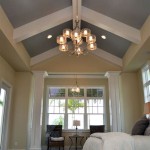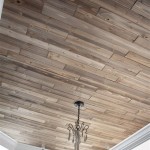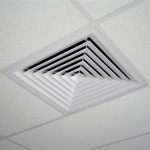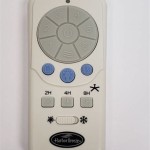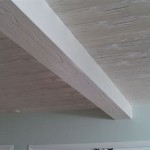How to Mount a Ceiling Fan on an Angled Wall Without Studs
Installing a ceiling fan can improve air circulation and enhance the aesthetic appeal of a room. However, mounting a ceiling fan on an angled ceiling without the presence of readily accessible studs presents a unique set of challenges. Correctly addressing these challenges is crucial for ensuring the fan's secure installation and safe operation. This article outlines the steps and considerations necessary for successfully mounting a ceiling fan on an angled ceiling when traditional stud support is unavailable.
The primary difficulty in this scenario stems from the need to provide sufficient load-bearing support for the ceiling fan's weight and the dynamic forces generated during its operation. Unlike a flat ceiling with direct access to studs, an angled ceiling distributes the weight differently, and the absence of studs requires alternative anchoring methods. A poorly executed installation can result in the fan wobbling, becoming detached, or even causing structural damage to the ceiling. Therefore, a thorough understanding of the required materials, tools, and techniques is paramount before commencing the installation process.
Determining the Angle and Selecting Appropriate Hardware
The first step involves accurately determining the angle of the ceiling. This can be achieved using an angle finder, bevel gauge, or digital level. The angle measurement is essential for selecting the correct type of mounting bracket and downrod. Most ceiling fan manufacturers offer specific hardware designed for angled ceilings. The downrod is particularly crucial, as it needs to be long enough to ensure adequate clearance between the fan blades and the ceiling. Insufficient clearance can restrict airflow and create undesirable noise.
Furthermore, it is important to assess the existing electrical wiring. Ensure that a suitable electrical junction box is already installed in the ceiling. This junction box should be rated to support the weight of a ceiling fan. If the existing junction box is not fan-rated, it must be replaced with one that meets the required safety standards. This typically involves disconnecting the power supply and carefully removing the old junction box, followed by installing the new one and ensuring that all electrical connections are properly made and secured.
Selecting appropriate hardware also involves considering the weight of the ceiling fan. Heavier fans require more robust mounting solutions. Consult the manufacturer's specifications for the fan's weight and confirm that the chosen mounting bracket and anchoring system are capable of supporting it. It is advisable to opt for hardware that exceeds the minimum weight requirement to provide an additional margin of safety.
In the absence of studs, several alternative anchoring methods can be employed. These include using ceiling fan mounting braces, toggle bolts, or specialized drywall anchors designed for heavy loads. The choice of anchoring method will depend on the ceiling's construction material (e.g., drywall, plaster, wood), the angle of the ceiling, and the weight of the fan. It is recommended to consult with a qualified electrician or structural engineer if there are any concerns about the suitability of a particular anchoring method.
Installing a Ceiling Fan Mounting Brace
A ceiling fan mounting brace is a popular and effective solution for securing a ceiling fan to an angled ceiling without studs. These braces typically consist of an adjustable metal bar that spans between existing ceiling joists or rafters. The brace provides a solid mounting point for the ceiling fan's junction box and mounting bracket.
The installation process begins by locating the ceiling joists or rafters above the finished ceiling. This can be done using a stud finder or by visually inspecting the ceiling for signs of nail or screw patterns that indicate the joist locations. Once the joists have been located, carefully cut a small hole in the ceiling at the desired location for the fan. This hole should be large enough to accommodate the mounting brace.
Insert the mounting brace through the hole and extend it until it spans between the two joists. Adjust the brace to ensure that it is securely in contact with the joists and that it is level. Secure the brace to the joists using screws or nails. Some mounting braces may require additional support, such as wood blocks, to ensure a stable and secure connection.
After the brace is securely installed, attach the ceiling fan junction box to the brace. Ensure that the junction box is properly aligned and that all electrical connections are made in accordance with local electrical codes. Connect the wiring from the fan to the wiring in the junction box, following the manufacturer's instructions. Carefully tuck the wires into the junction box and secure the cover plate.
Finally, attach the ceiling fan mounting bracket to the junction box. The mounting bracket is the interface between the junction box and the fan itself. Ensure that the bracket is securely attached and that it is properly aligned with the downrod. Follow the manufacturer's instructions for attaching the downrod and the fan motor to the mounting bracket. Once the fan motor is securely mounted, attach the fan blades and any other accessories.
Utilizing Toggle Bolts or Heavy-Duty Drywall Anchors
In situations where accessing or installing a mounting brace between joists is impractical, toggle bolts or heavy-duty drywall anchors can be used as an alternative anchoring method. These anchors are designed to provide a secure hold in drywall or plaster without relying on studs. However, it is crucial to select anchors that are specifically rated for the weight of the ceiling fan and that are appropriate for the ceiling's construction material.
Toggle bolts consist of a bolt and a hinged wing that expands behind the drywall to distribute the load over a wider area. To install a toggle bolt, drill a hole in the ceiling that is large enough to accommodate the wings of the toggle bolt when they are folded. Thread the bolt through the mounting bracket and attach the toggle wings. Fold the wings and insert the bolt through the hole in the ceiling. Once the wings are fully inserted, they will spring open behind the drywall, providing a secure anchor.
Tighten the bolt to clamp the mounting bracket against the ceiling. Be careful not to overtighten the bolt, as this could damage the drywall. It is important to use multiple toggle bolts to distribute the load evenly and to ensure a stable and secure mounting. Follow the manufacturer's instructions for the recommended number of toggle bolts and their placement.
Heavy-duty drywall anchors are another option for mounting a ceiling fan without studs. These anchors typically consist of a threaded sleeve that is inserted into a pilot hole in the drywall. As the anchor is tightened, the sleeve expands to grip the drywall and provide a secure hold. Heavy-duty drywall anchors are available in various sizes and weight ratings, so it is important to select anchors that are appropriate for the weight of the ceiling fan.
To install a heavy-duty drywall anchor, drill a pilot hole in the ceiling at the desired location for the anchor. Insert the anchor into the pilot hole and tighten it using a screwdriver or wrench. As the anchor is tightened, the sleeve will expand to grip the drywall. Attach the mounting bracket to the anchors using screws. As with toggle bolts, it is important to use multiple anchors to distribute the load evenly and to ensure a stable and secure mounting.
When using toggle bolts or drywall anchors, it is crucial to ensure that the ceiling is in good condition. If the drywall is damaged or deteriorated, it may not be able to provide a secure hold for the anchors. In such cases, it may be necessary to repair the ceiling before installing the ceiling fan.
Regardless of the chosen anchoring method, it is always advisable to consult with a qualified electrician or structural engineer if there are any concerns about the safety of the installation. A professional can assess the ceiling's construction, recommend the appropriate anchoring method, and ensure that the fan is installed safely and securely.

Electrical Mount Ceiling Fan At The Peak Of A Sloped Home Improvement Stack Exchange

Cathedral Ceiling Fan Installation Instructions

Mounting Ceiling Fan On Sloped Home Improvement Stack Exchange

Install Ceiling Fan On Sloped Simple Modern Handmade Home

Avoid This Very Common Mistake Diyers Make When Installing A Ceiling Fan How To

Cathedral Ceiling Fan Installation Instructions

Want To Install An Outdoor Ceiling Fan Directly Exposed 2x4 On A Covered Porch Home Improvement Stack Exchange

In Depth Fan Installation Guide With Downrod Shortening Extending Method

How To Install A Ceiling Fan The Home Depot

Electrical Mount Ceiling Fan At The Peak Of A Sloped Home Improvement Stack Exchange
Related Posts

